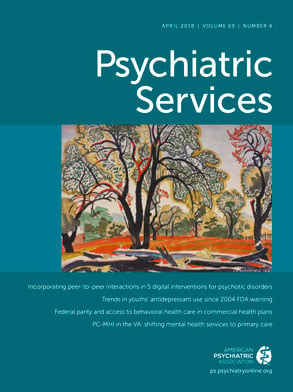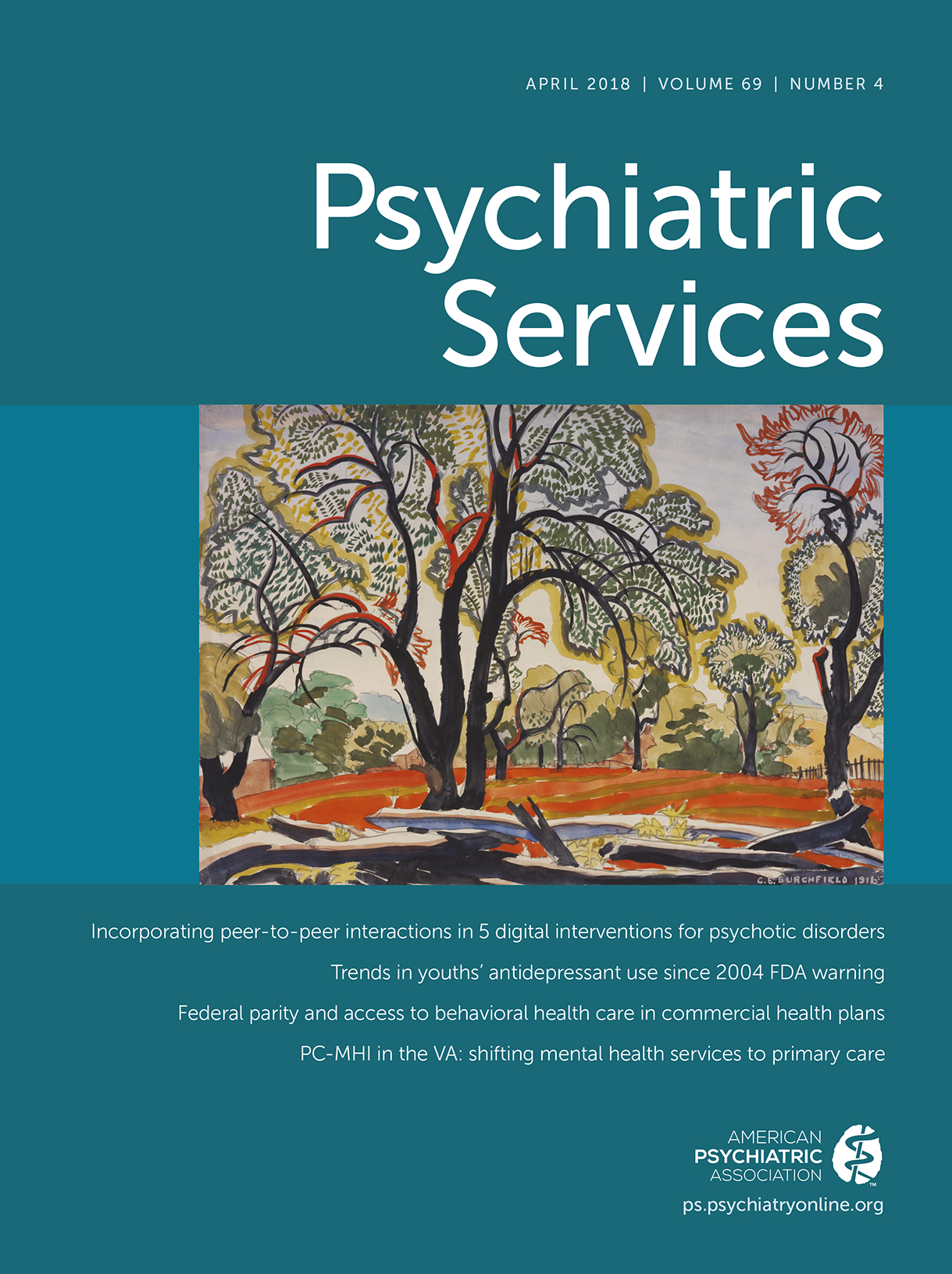Western medicine is captivated by educational positivism—the belief that prohealth decisions increase significantly through pedagogic strategies that promote health literacy. Education programs have emerged to enhance psychiatric literacy of various constituencies. Two programs, one involving service gatekeepers and the other involving the general public, are especially popular. In a service gatekeepers model, health professionals (such as primary care physicians or nurse practitioners) are trained in the use of assessments for early identification of mental illness. In the other model, members of the general public are taught to recognize mental health problems among peers and simple ways to encourage them to seek professional services. Nevertheless, education effects are sometimes muted by limitations in pedagogic processes. This Open Forum provides examples of these limitations, including some examples from public health education efforts in other areas of medicine.
The Basis of Educational Positivism
Scientific positivism blossomed in the early 19th century as an optimistic epistemology in which researchers and professionals expand their knowledge solely by using the empirical method. I coined the term educational positivism as its conceptual peer: the premise that the public as a whole can exponentially access this knowledge base through planned pedagogic endeavors. Both theories are fundamentally hopeful and democratic in that they presume that anyone with sufficient training can access what is known about illness in order to promote health. Scientific positivism, however, was shown to be incomplete leading to critical evolutions, an acceptance that not everything can be known through the scientific method.
Educational positivism also has limits. At its extreme, educational positivism engenders a “more is better” confidence that often leads to the development of education programs that overwhelm rather than inform. They bombard audiences with too much information, leading to little meaningful change in actual health behavior (
1). Below are two examples of the unintended consequences of a “more is better” approach to education, one involving primary care providers (PCPs) and the other involving the overall population.
PCPs are recognized as essential partners for engaging people with mental illness in psychiatric care. In this spirit, education programs teach them strategies to identify, among other things, suicide risk, depression, trauma, substance use disorder, and early psychosis (
2). PCPs must balance these priorities with related public safety concerns about domestic violence, guns in the home, riding in cars without seat belts, and texting while driving. In addition, they are expected to devote attention to the assessment of general medical health to identify cancer markers, promote healthy lifestyles, and monitor heart health. Addressing mental health priorities is righteous to be sure, but it likely overwhelms PCPs with the addition of yet more tasks to their already busy practice day. Identification is only the first step of the task. The PCP’s work increases exponentially if positive indicators emerge. They must then find available mental health providers who are willing to accept a referral.
Similar efforts have addressed the mental health literacy of the overall population. Mental Health First Aid (MHFA) is a widely disseminated and well-evaluated intervention created in the spirit of the American Red Cross’ training in cardiopulmonary resuscitation (CPR) (
3). Typically a two-day course, MHFA begins with a review of the phenomenology and epidemiology of serious mental illnesses in the
DSM, including depression, anxiety disorders, psychoses, substance use disorders, and eating disorders. This background is meant to inform the MHFA action plan, called ALGEE: Assess for suicide risk, Listen nonjudgmentally, Give reassurance/information, Encourage professional help, and Encourage self-help/support. Although ALGEE has potential for peer intervention in the community, is it absolutely necessary to include five chapters on symptoms and disease in the foundation of the action plan? After all, CPR students do not need to know the pathophysiology of the heart to successfully use CPR guidelines to check airways and begin chest compression. In addition, ALGEE may lack behavioral simplicity—its action steps are vague, and implementation is potentially long and demanding.
Why Education Might Have Limited Effects
Education might have limited effects because it overloads students with information. The impact of information overload varies depending on whether the event is an example of discrete education (for example, a single seminar for PCPs on assessing suicide risk) or of distributed education (for example, a yearlong program providing repeated training in learning evidence-based interventions for treating depression). Discrete education is restricted by processing capacity in the relatively brief time of training (
4,
5). After all, program participants in an hour-long session can attend to limited information in the cacophony of a health class. Even less of this information is then encoded into meaningful existing schemas (for example, what a person already knows about suicide risk), transferred from short- to long-term memory, subsequently retrieved, and translated to action (for example, recognizing that an individual has suicidal intentions and should be referred to the psychiatrist on call). Metaphorically, in the discrete setting, capacity to absorb information might be viewed as the lens through which finite and relatively limited information passes. Hence, educators must select information for their program sparingly, making sure to focus on a simple and brief behavior change goal.
Distributed education is increasingly subject to information overload because it is no longer restricted to face-to-face didactic instruction. It now occurs in the larger sphere of cyberspace (for example, online sites, social media, e-mail volume, and cell phone calls) and place-based environments (home and work). Cyber-based information overload has been shown to be associated with more stress and poorer health (
6) as well as confusion about appropriate health decision making (
1). Extensive research has shown that cancer information overload is significantly correlated with health information avoidance, the active effort to eschew information channels that might improve knowledge about the course of various cancers and corresponding, evidence-based interventions (
7,
8). As a limitation of distributed education, its capacity is a finite reservoir that holds only so much information. New information may not be able to offset what is already in the reservoir. Alternatively, new knowledge might supplant that which has already been learned
Information processing is further limited if education fails to focus on providing context for new information (
9). Frequently, the foci of mental health education can seem foreign to the student, especially a person who is not grounded in some study of human behavior. Commonly shared experiences that represent extremes of depression or anxiety are often couched in language related to symptoms and neuroscience, thereby undermining the assimilation of new ideas into existing comprehensions. Instead, educators should present information in terms of readily accessible human experience.
Finally, assimilating new information can be hindered by psychological reactance that causes a boomerang effect (
10,
11). Psychological reactance is the motivational response to social action that threatens or eliminates behavior freedom. Health education is often experienced as a social action that threatens or eliminates behavior freedom, leading to a boomerang that subsequently diminishes knowledge and behavior consistent with education goals. For example, some parents believe that autism is caused by childhood vaccinations. Recognizing this to be a major health concern, public health educators have sought to promote vaccinations among recalcitrant families by using a combination of didactic techniques to replace these attitudes, such as summarizing the latest facts on vaccinations and creating compelling videos showing the real-world impact of failing to vaccinate young children. Despite well-planned programs, results are sobering. Parents who expressed disbelief about vaccination safety before completing the program were less likely to have their children vaccinated when the program was completed (
12).
Suggestions for Improving Mental Health Literacy
Education positivism needs to be tempered. More information is not necessarily better—in fact, it might worsen outcomes because of information overload. In pursuing health literacy, educators need to be mindful of the central goal: not whether students gather more knowledge about psychiatric diagnoses and evidence-based care, but whether this knowledge leads to change in behavior. Behavioral goals are defined by action simplicity. Do PCPs actually add suicide screens to regular practice? Are members of the general public able to help peers in need to engage in professional care? As one example, PCPs are more likely to implement suicide screens that contain a limited number of items (a five-item screen rather than 25-item review) with concrete answers (“Yes or no, in the past month, did you feel better off dead?”). The following four guidelines should be considered when designing mental health literacy programs.
Processing capacity is a limited resource.
It is important to remember that processing capacity is a limited resource not to be wasted (
13). Attempts to improve mental health literacy may consume capacity that cannot be used elsewhere. Primary care physicians should not waste cognitive capacity by reviewing the neurophysiology of depression as part of a program for learning to screen for suicide risk. MHFA students do not need hours of training on the
DSM for program graduates to engage others about the mental health challenges. Training programs should be anchored by simple and brief behavioral prescriptions, especially prescriptions that fit the context.
New training may interfere with already-learned skills.
Learning new skills may affect one’s ability to perform skills that one has already learned (
14). Screening for suicide may diminish when PCPs subsequently focus on domestic violence. It is important to consider how new behaviors might be intertwined with existing approaches. For example, how might suicide screens be integrated with existing efforts to identify depression?
Take the big picture.
Mental health literacy should be considered part of the big picture; thus it is important to ask how specific programs advance literacy across the breadth of community health priorities. A proverbial “master” plan is necessary to make sure that the activities of multiple groups, no matter how good their intentions, do not interfere with each other. Institutions such as schools or professional associations may need master plans for an overall curriculum of health pursuits. This is a daunting task because administrators may have to decide to pursue one goal while omitting another.
Include people with lived experience as partners.
The meaning of any lesson can be amplified by incorporating people with lived experience in the curriculum as partners (
15). In this way, students better understand the information and corresponding action in context. Involving people with lived experience also promotes a perspective of recovery and empowerment.

